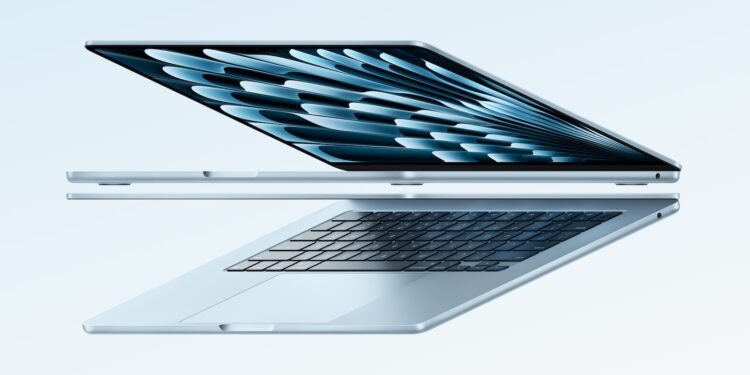Apple achieved the strongest growth of all PC manufacturers in the first quarter of 2025. The main reason: the new M4 MacBook Air. Although the model doesn't offer any groundbreaking innovations, it has impressed many users. At the same time, there is uncertainty about how growth will develop over the rest of the year—especially due to potential tariffs in the US.
If you need a new laptop, the M4 MacBook Air is currently one of the most interesting options. It offers solid performance, AI capabilities, and an attractive price-performance ratio. According to several reviewers, it's the model most users should choose. At the same time, it helps Apple significantly increase its lead over the competition. However, this positive trend could soon stall due to geopolitical risks.
Apple is growing strongly – significantly stronger than the market
According to a recent report by Counterpoint Research, the global PC market grew by 6.7 percent in the first quarter of 2025. A total of 61.4 million units were shipped. However, Apple achieved above-average growth of 17 percent. No other manufacturer achieved as strong an increase. Only Lenovo also achieved double-digit growth with an increase of 11 percent. The figures prove that Apple has hit a nerve with the M4-based MacBook series. Even though the M4 MacBook Air isn't a revolutionary upgrade, it has been widely described as the perfect time to switch – especially for users still working on an Intel Mac. For the price of $999 (starting at €1,199 in Germany), you get a notebook with modern architecture, good battery life, and AI features.
Why the M4 MacBook Air is so successful
The new M4 series brings, among other things, AI features directly to the MacBook Air. Even though Apple has been rather cautious about communicating this so far, one thing is clear: The M4 is not only faster and more efficient than its predecessors, but also significantly improved in terms of future-proofing. For many users, the M4 MacBook Air is therefore the obvious choice – especially with an entry-level price of under $1,000. The timing of the release also plays a key role. Many retailers filled their warehouses with new devices in the first quarter to anticipate potential tariffs. This created an additional surge in demand that fueled Apple's growth.
Uncertainty due to impending tariffs
As strong as the numbers look, they should be treated with caution. The report by Counterpoint Research points out that part of the growth was due to anticipatory effects. The reason: In the USA, new tariffs on imported technology products, including semiconductors, are threatened. Apple is not yet directly affected, but it is unclear how long this will last. Although some exceptions to the tariff rules were recently approved, uncertainty remains. The Trump administration is already planning new duties – not only for laptops, but also for other tech products. One example is the new tariff on solar panels from Southeast Asia, which is extreme at over 3,500 percent. If a similar development spreads to notebooks or chips, this could significantly slow growth momentum.
Market share increases only slightly
Despite the high growth, Apple's market share increased only slightly – from 9 to 10 percent. This is due to other manufacturers also increasing their shipments. The competition isn't sleeping: Lenovo is also benefiting from a smart product selection and is also increasingly focusing on AI-enabled PCs (via Counterpoint Research).
M4 MacBook Air: Affordable entry-level, strong performance
The M4 MacBook Air has helped Apple achieve impressive quarterly growth. For you as a user, this means a powerful, modern notebook at a fair price, currently one of the best options on the market. If you're planning an upgrade, the timing is perfect. But the political situation in the US could change things quickly. If you want to be on the safe side, don't wait too long—because no one knows what tariffs will come next. (Image: Apple)
- Apple C1: The first proprietary modem with noticeable improvements
- Magic Mouse 3 will probably be released in 2026 – these are the new features





